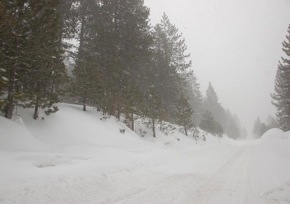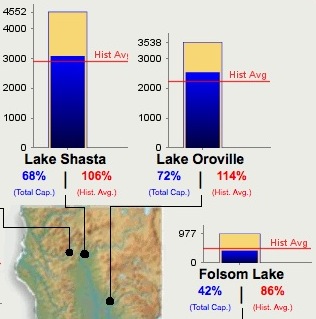Water users may be relying heavily on leftover water storage from last year

It was startling to see the state’s lead snow surveyor kneeling on bare grass near Echo Summit, trying to find enough snow to measure the water content. But so it went with the first official survey of the season, conducted by California’s Dept. of Water Resources.
The manual survey affirmed what remote sensors had already relayed — that water content in the Sierra snowpack stands at just 19% of the average reading for this time, right around New Year’s. The readings are just seven percent of where things usually stand on April first, meaning we have a long way to go, to get back to “normal.”
“The other discouraging thing is looking at the long-range weather forecast, that’s not encouraging either,” said Maury Roos, the chief hydrologist at DWR. He says with the season about one-third evaporated and no rain or snow in the forecast, there’s little encouragement on the horizon. “So if we lose half the month, then we’re down to trying to make it up in about half the season,” Roos told me by phone today.

At that particular spot where surveyor Frank Gehrke was scratching around for snow today, he logged a snow depth of four inches. That’s the least since the state started recording surveys of that snow course, in 1964.
The good news is that reservoirs are still rippling with runoff from last year’s epic snows in the Sierra Nevada. Two key Northern California reservoirs, Shasta Lake and Lake Oroville, are at 106% and 114% of historical averages, respectively. Roos says he estimated that this “carry-over” of water storage from last year could perhaps offset as much as 20% of this winter’s shortfalls. But the rest would still have to be made up in additional precipitation with what’s left of the “wet” season. “If it’s a real duster,” Roos told me, “There are still gonna be problems.”
Those problems would present in the form of water shortages during the summer. State water managers say their preliminary estimate is that towns and farms served by the State Water Project can expect 60% of the water they’ve requested to be delivered — but they hasten to add that weather conditions can change that figure dramatically, as they did last year when an initial 25% estimate swelled to 80% by winter’s end.
